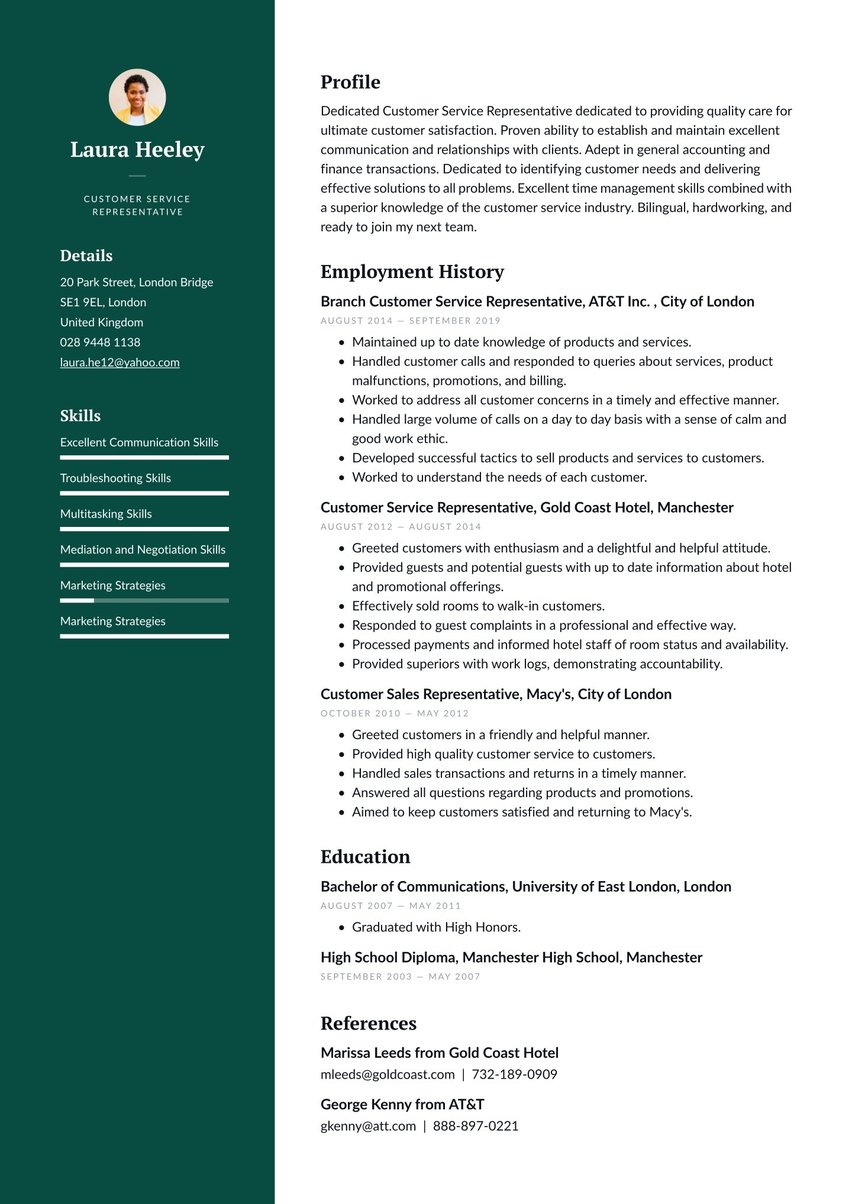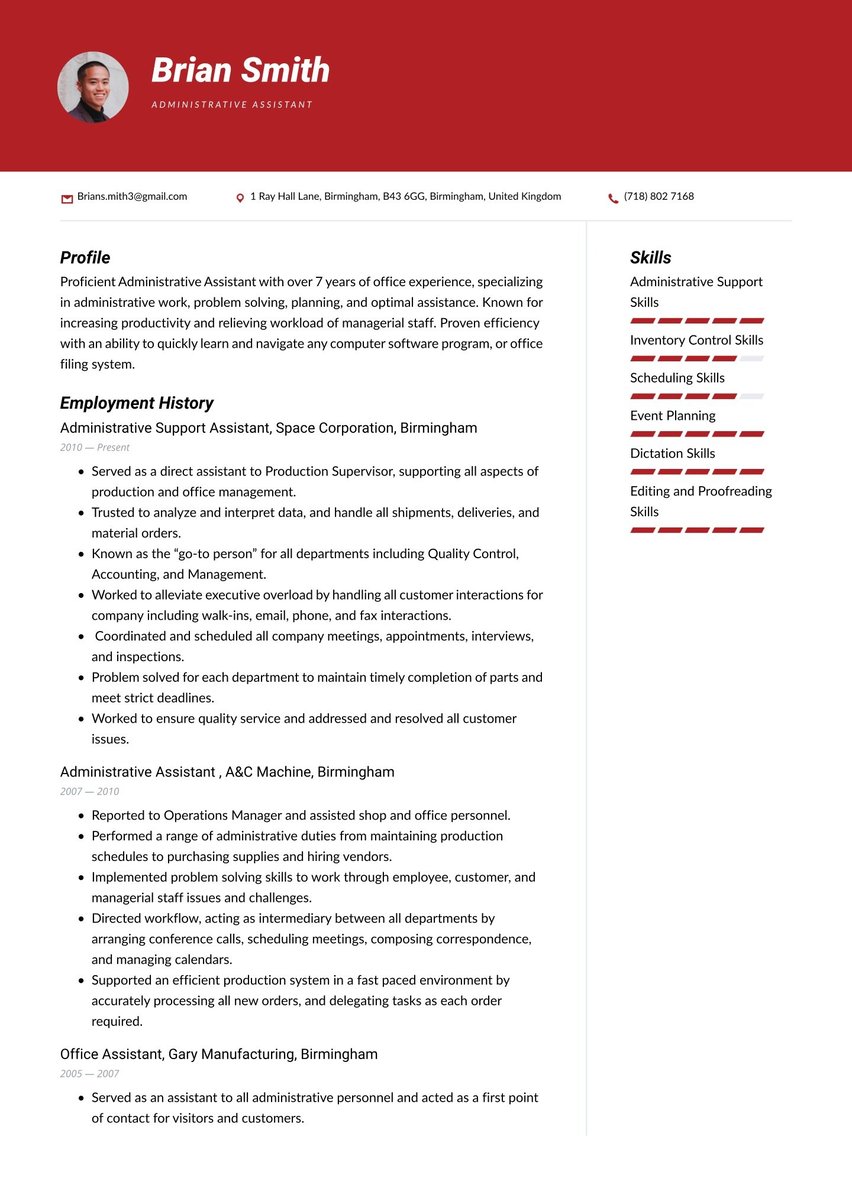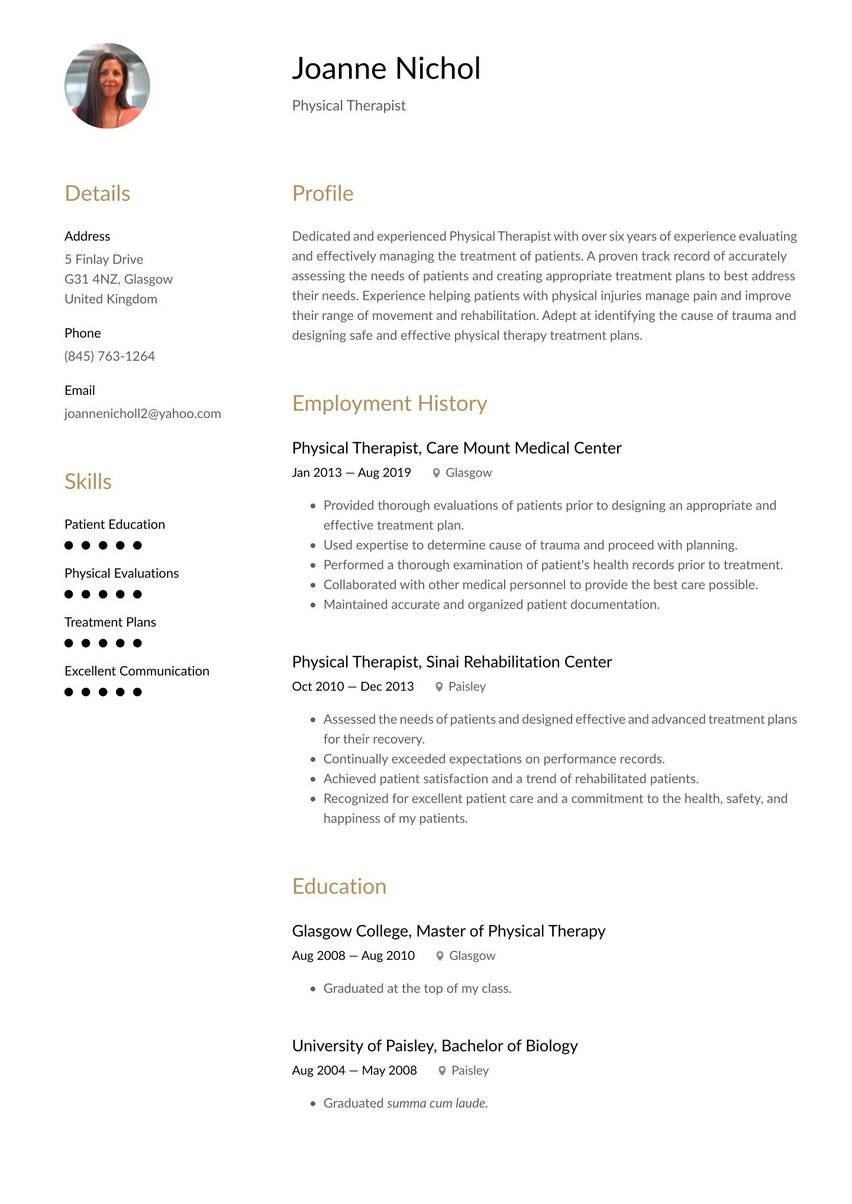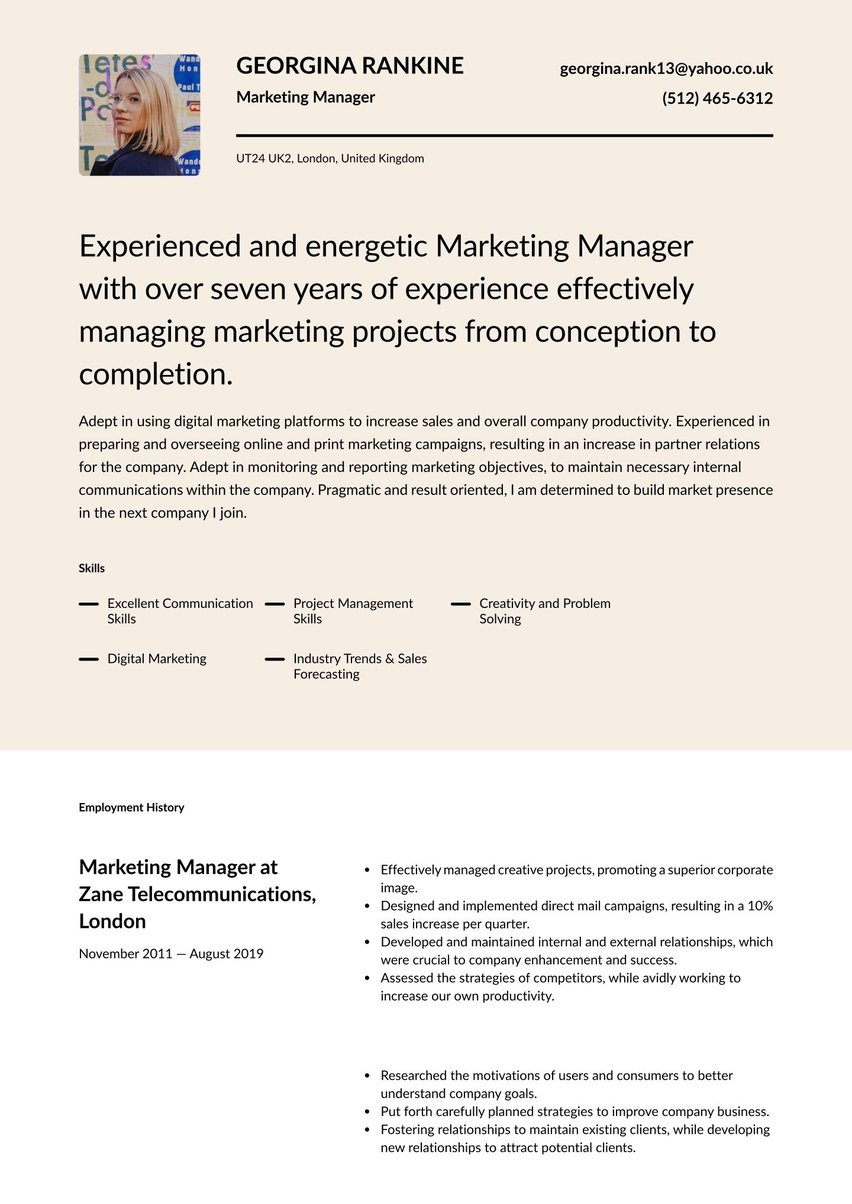Driven PhD Candidate with a wealth of knowledge and experience in biological and environmental fields. Demonstrated capacity for partnering with peers and colleagues to execute complex research initiatives. Passionate about leveraging scientific research, academic partnership, and textual analysis to advance industry knowledge and capabilities.
09/2020 - 08/2021, Research Assistant, Cambridge University, Cambridge, UK
- Assisted in the design and implementation of a two-year research project on urban biodiversity.
- Conducted fieldwork, data collection, and statistical analysis using R and Python.
- Contributed to three published research papers in notable environmental science journals.
09/2018 - 03/2020, Teaching Assistant, Cambridge University, Cambridge, UK
- Facilitated laboratory sessions for undergraduate students, ensuring safe and proper use of laboratory equipment.
- Assisted in grading assignments and exams, offering feedback to help students improve their understanding of course material.
- Developed and maintained course materials, including laboratory manuals and guides.
09/2020 - present, PhD in Environmental Biology, Cambridge University, Cambridge, UK
Thesis: "Urban Biodiversity and Conservation"
09/2018 - 03/2020, Master of Science in Environmental Science, Cambridge University, Cambridge, UK
Dissertation: “Conservation Strategies for Urban Environments”
09/2015 - 03/2018, Bachelor of Science in Biology, Cambridge University, Cambridge, UK
Final Year Project: “Assessing Biodiversity in Urban Parks”
- Research & Data Analysis
- Project Management
- Lab Safety Practices
- Biology & Environmental Industries
- Statistical Analysis
- Lab Training & Managements
- Course & Curricula Design
- Fieldwork
- Research Publication
You may not be a doctor of anything just yet. But to undertake a doctorate, your PhD CV will need to pass a full bill of academic excellence.
Sure, your methodical and committed nature knows no limits. However, the truth is that unless the institution where you’re applying to can see that, your profile is just another stack of papers on the desk.
Your PhD CV is a key tool to communicate your value and promise as a PhD candidate and that’s where Resume.io can help. We provide a powerful resource for individuals embarking on the next stage of their unique career. Our library has a selection of job-specific CV examples. You may be the master of your field, but we can help you make sure your application is doing your academic prowess the justice it deserves. This CV guide, along with the corresponding CV sample, will cover the following topics:
- What does a PhD student do?
- How to write a PhD CV (tips and tricks)
- The best format for a PhD CV
- Advice on each section of your CV (summary, work history, education, skills)
- Professional CV layout and design hints.
What does a PhD student do?
As a PhD student, you are usually signing onto a three to four year long process in your chosen field of research. This could extend to six or seven years when executed part-time. Your main task is to carry out a large independent research project.
A PhD itself is broken down into three stages, with the first year focusing on meeting with your supervisor to discuss your research proposal and ironing out an action plan and deadlines. The following two years involve collecting results and building on your thesis. You will often also be expected to take on some teaching. You may submit some of your findings to academic journals. Finally, you’ll be expected to write up your thesis and defend it in a final event called a “viva voce”.
How much will you earn after completing a PhD?
Your earning potential will depend on your field as well as the industry and type of job you plan to look for following your PhD. The Higher Education Statistics Agency found that graduates with a PhD are more likely to earn over £30,000 a year than graduates who only hold a Masters.
How to write a PhD CV
While your PhD CV will require an academic focus, there are elements of a CV which should always be included. Remember to include the following elements in yours:
- The CV header
- The CV summary (aka profile or personal statement)
- The employment history section
- The CV skills section
- The education section
Unlike a traditional CV, your PhD CV will focus on your academic achievements. However, before you think about how to fill out each section of your CV, take a moment to consider where you are applying to carry out your PhD.
Your PhD CV should match the tone of the institution where you hope to conduct your research. Plus, when you understand better the faculty that you could be working in, you’ll have a better idea of how to fill out each section and what they are likely to respond positively to.
Choosing the best CV format for a PhD student
For most job seekers, the reverse chronological CV is the best CV format. However, in academia you will usually be expected to highlight your academic qualifications first. This format is a little like the functional CV format which prioritises your skill sets. The main difference is that your skills should sit underneath your academic experience.
Another thing that the academic CV format has in common with a functional CV format is that you are able to separate your technical and niche skills into different categories. For instance, while many job descriptions may ask for “research skills”, you are more likely to need to help your potential advisor to understand the methodologies that you are most experienced with. This format also allows you to go into further detail on other aspects of your sector and the hard and soft skills that are important for you to carry out your desired research.
CV summary example
Your PhD CV should start with a brief introduction to who you are as an academic. Craft a three to four sentence introduction that explains what makes your profile uniquely suited to the PhD you’re hoping to carry out. Remember to include the keywords that will impress anyone reading your CV.
Match your language
This is another compelling reason to do your due diligence and find out more about the faculty where you’re hoping to carry out your PhD. Finding shorthands to communicate the fact that you’re on the same page will go miles in helping you to stand out from the crowd.
- Use the same keywords as the faculty uses to describe your field of expertise.
- Where appropriate make sure your chosen language also reflects how the faculty describes methodology techniques you use, too.
- Match the written level of formality that the faculty uses to present itself such as on their website or in brochures and prospectuses.
This is the most freeform writing you will be expected to do in your PhD CV. Freeform writing may not scare you. You are likely to be embarking on writing up your original research, after all. However, it’s normal to get writer’s block when it comes to writing about yourself. If that sounds like you, consider checking out some other CV examples to get your creative juices flowing. The following CV samples could help you to get in the right frame of mind:
Driven PhD Candidate with a wealth of knowledge and experience in biological and environmental fields. Demonstrated capacity for partnering with peers and colleagues to execute complex research initiatives. Passionate about leveraging scientific research, academic partnership, and textual analysis to advance industry knowledge and capabilities.
Employment history sample
While it may not be the focus of your PhD CV, the employment history section can still show important experience that you have held. However, you may choose to position it underneath the education section of your PhD CV.
Include subheadings for each previous role you’ve held and list them in reverse chronological order. That means your most recent position should be at the top of the section. For each subheading, include the job title, employer name, location, and dates of employment. Even if you have spent most of your time in formal education, you may choose to use this section to detail any teaching experience, research assistant experience, or similar that would be most relevant for the PhD you’re applying for.
The CV sample content below will give you an example of how to do this in practice.
Research Assistant at Cambridge University, Cambridge, UK
September 2020 - Present
- Assisted in the design and implementation of a two-year research project on urban biodiversity.
- Conducted fieldwork, data collection, and statistical analysis using R and Python.
- Contributed to three published research papers in notable environmental science journals.
Teaching Assistant at Cambridge University, Cambridge, UK
September 2018 - March 2020
- Facilitated laboratory sessions for undergraduate students, ensuring safe and proper use of laboratory equipment.
- Assisted in grading assignments and exams, offering feedback to help students improve their understanding of course material.
- Developed and maintained course materials, including laboratory manuals and guides.
CV skills example
If the education section is the beating heart of your PhD CV, then the skills section is the lungs. Your hard and soft skills and the knowledge that you’ve acquired on your academic path give life to your PhD CV. Don’t be afraid to split your skills section into multiple sections if appropriate.
For instance, you may choose to separate your research skills section detailing the methodologies you use from another section about the technical ins and outs of your area of expertise.
Soft skills vs hard skills
Despite stereotypes of cold, impersonal professors who hide in their offices, even the most illustrious of academics need a mix of hard and soft skills. From teaching opportunities during your PhD to collaborating with your colleagues and potential study participants: soft skills count. Don’t forget to mention them on your PhD CV.
- Research & Data Analysis
- Project Management
- Lab Safety Practices
- Biology & Environmental Industries
- Statistical Analysis
- Lab Training & Managements
- Course & Curricula Design
- Fieldwork
- Research Publication
PhD CV education example
There are certain expectations for the education section of your PhD CV. It’s a good idea to position your education section at the top of your CV, straight after your summary. Now that you’re pursuing a role as a PhD student, you should show that you understand a certain level of academic excellence is expected.
You can achieve this in your PhD CV’s education section by making sure you neatly display your higher education qualifications in reverse chronological order. Each qualification should have its own subheading detailing the title of the qualification, the academic institution’s name and location, and the dates attended. It’s generally agreed upon that there is no need to include details of your A levels after you have completed a Masters degree.
Make sure your grades or results are clear for the reader. You could also include some bullet points underneath the qualification’s subheading that highlight relevant aspects of the course or qualification that relate to the PhD you’re aiming to carry out.
The CV sample content below will give you a realistic view of how you might like to detail your PhD CV’s education section.
PhD in Environmental Biology, Cambridge University, Cambridge, UK
September 2020 - Present
- Thesis: "Urban Biodiversity and Conservation"
Master of Science in Environmental Science, Cambridge University, Cambridge, UK
September 2018 - March 2020
- Dissertation: “Conservation Strategies for Urban Environments”
Bachelor of Science in Biology, Cambridge University, Cambridge, UK
September 2015 - March 2018
- Final Year Project: “Assessing Biodiversity in Urban Parks”
CV layout and design
A serious PhD candidate needs a serious CV that looks the part. After all, visual communication is still part of telling the story of the kind of PhD student you’re likely to be. So, choose a layout that is clear and precise. For most PhD students a simple or even monochrome colour scheme is perfectly acceptable.
However, if you are studying in a more creative area you could consider something with a pop of colour. The most important function that your CV needs to carry out is to be set out clearly and be legible.
If you’re not one for designing documents and prefer to be the one hitting the books to read, you can always consider using one of our professionally-designed CV templates. No need for finicky formatting, so you can sooner get back to hitting the books and your studies!
Key takeaways for a PhD CV
- Your academic prowess should stand out by highlighting your education section above all else.
- Use your employment history section to detail relevant positions that have equipped you with needed experience for this PhD.
- You can split your skills section into multiple headings and categories if you want to clarify your wide range of skills to anyone reading your PhD CV.
- Your PhD CV should look the part with a professional-looking design.

































